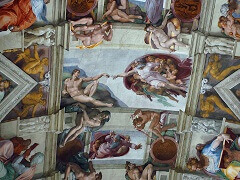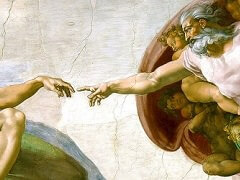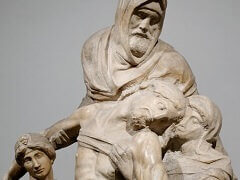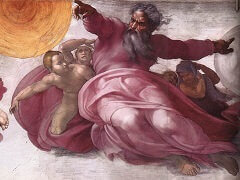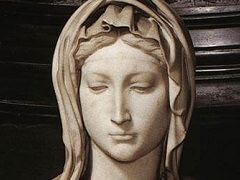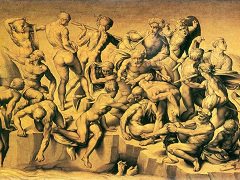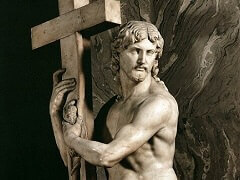Creation of Eve, by Michelangelo
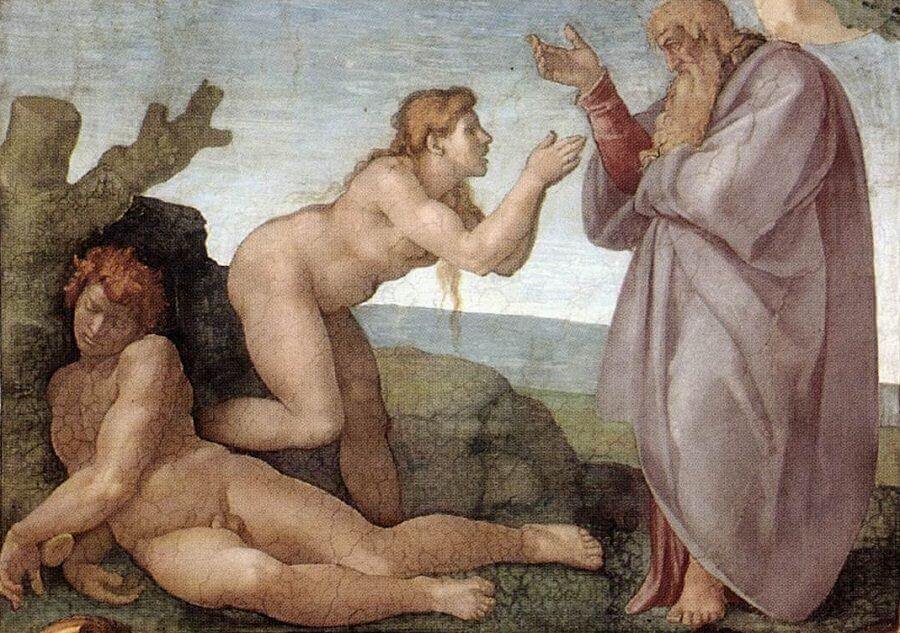
The fifth scene in the chronological order of the narrative, The Creation of Eve, is depicted in the centre of the vault of the fifth bay, between two pairs of ignudi with medallions. Michelangelo
painted this scene immediately beyond the screen that originally divided the interior of the chapel into two almost equal parts. Proceeding from the entrance of the chapel towards the altar, the
figure of the Lord appears for the first time in the Creation of Eve. He is also present in all the following scenes. The central position of this scene creates a further division in the nine scenes
in the ceiling. This is in addition to the pattern created by the alteration of larger and smaller panels, and the arrangement by subject; three stories of the Creation of the world, three of Adam
and Eve, and three of Noah, presented as the second Adam, saved from the flood, through the flood, seen as the symbol of the baptism.
In the four ignudi who hold the yellow ribbons interwoven with the bronze-coloured medallions, the use of contrapposta with a variety of gestures and poses has now been replaced the symmetrical
arrangement of figures. The relationship between the figures, placed opposite each other in pairs, is based on increasingly free and complex rhythmical correspondences, with rotating movements and
pronounced bendings of the limbs.
The subjects of the scenes painted on the bronze-coloured medallions are a matter of debate: the one surmounting the figure of the prophet Ezekiel (at the left) might represent the Destruction of
the Tribe of Ahab, Followers of Baal, according to a different interpretation, the Death of Nicanor; the one above the Cumaean Sibyl (at the right) depicts either David before the prophet Nathan,
or Alexander before the High Priest of Jerusalem.


